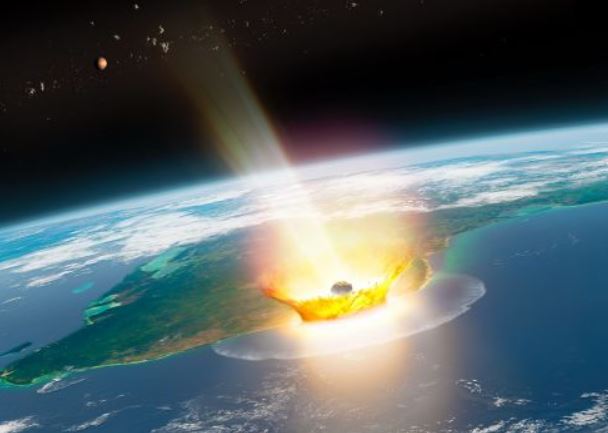A team of international scientists, including the National Research Council’s Institute of Marine Sciences (CNR-Ismar), has studied traces of the asteroid impact that caused the extinction of dinosaurs 66 million years ago.
The team analyzed samples from the layer bounding the Cretaceous-Paleogene transition using a newly developed analytical technique focused on isotopic ratios of the element ruthenium. This transition represents the last major mass extinction event on Earth, during which more than 70 percent of all species became extinct.
According to a widely accepted theory, the late Cretaceous mass extinction was caused by the impact on Earth of an asteroid larger than 10 km in diameter that struck the Earth at Chicxulub (Mexico). The asteroid and portions of the Earth’s crust near the impact site were pulverized and vaporized due to the energy released by the impact. Particles were distributed around the globe and in the stratosphere, causing a reduction in sunlight and photosynthesis processes for several years. This resulted in dramatic changes to Earth’s habitability. For years, the origin within the Solar System of the projectile remained a hotly debated issue.
Dust particles produced by the impact are now found in a clay layer that represents the Cretaceous-Paleogene (K-Pg) boundary. The K-Pg layer is exposed in many areas of the Earth, and some of the most studied locations are in Umbria and Marche. The K-Pg layer is known for its high concentrations of platinum group elements (osmium, iridium, ruthenium, platinum, rhodium, palladium). This enrichment comes from the vaporized asteroid, as these elements are generally much rarer in terrestrial crustal rocks.
By analyzing the isotopic composition of ruthenium, an element in the platinum group, in samples from the K-Pg boundary layer, the research team showed that the Chicxulub asteroid was originally formed in the outer portions of the solar system. “We found that the composition of the asteroid that impacted at Chicxulub is the same as that of carbonaceous meteorites, which are fragments of carbonaceous (C-type) asteroids that originally formed beyond Jupiter’s orbit,” said Mario Fischer-Gödde of the University of Cologne, first author of the study.
For comparison, the team also analyzed the ruthenium isotopic compositions of other terrestrial craters and ejecta layers of various ages in the geological record. These data show that over the past 500 million years, the dominant composition of impacting bodies on Earth was rocky (S-type) asteroid fragments. Unlike the impact of C-type asteroids at the K-Pg boundary, these S-type asteroids formed within the solar system. In fact, about 80 percent of all meteorites striking Earth today are derived from S-type asteroids.
Alessandro Bragagni, a CNR-Ismar researcher who co-authored the study, added, “Our results show that Chicxulub’s is so far the only large C-type asteroid to have been identified in recent geologic history. To find similar asteroids one has arguably to go much further back in geologic time. Traces of such events are found in rock cores dating back billions of years.”


